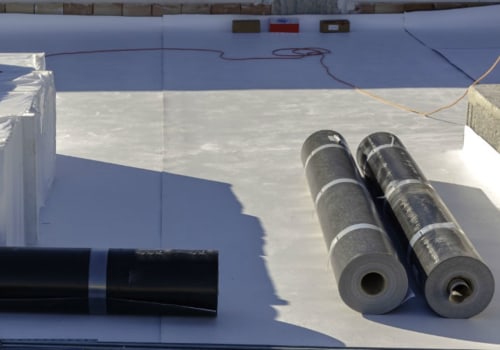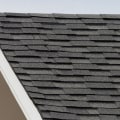When it comes to roofing materials, slate shingles are one of the most popular choices. Their timeless look and durability are just a couple of the reasons why so many homeowners opt for slate shingles. In this comprehensive overview, we'll take a closer look at what slate shingles are, their advantages, and how to choose the best slate shingle for your roof. Slate shingles have been around for centuries, making them one of the oldest roofing materials available.
They are made from natural stone, which is carefully quarried from the ground and then split into thin sheets that can be used as roofing material. Slate shingles are extremely durable, making them a great choice for any home or business. They are also fireproof and resistant to rot and insect infestation. When it comes to choosing the best slate shingle for your roof, there are several factors you need to consider.
From color and texture to size and thickness, each type of slate shingle has its own unique characteristics that need to be considered. We'll discuss these factors in more detail in the following sections so you can make an informed decision when selecting slate shingles for your roof.
Advantages of Slate Shingles
Slate shingles offer a number of advantages, including their durability, fire-resistance, and energy efficiency. Slate shingles are much more durable than other roofing materials such as asphalt shingles, making them an ideal choice for homes in areas that experience extreme weather. Slate shingles also have a Class A fire rating, meaning they are highly resistant to fire and will not ignite when exposed to flames.Additionally, slate shingles can help to reduce energy bills by providing extra insulation and protection from the elements. Overall, slate shingles offer homeowners many advantages and are a great way to protect a home from the elements. They are durable, fire-resistant, and energy efficient, making them a great choice for any homeowner looking to upgrade their roof.
Installation Considerations
When installing slate shingles, a variety of factors should be taken into account, including the roof slope, support structure, and material requirements. The roof slope of the structure should be sufficiently steep to ensure proper drainage.The support structure needs to be strong enough to support the weight of the slate shingles, which can be quite heavy depending on the size and thickness of the shingles. Additionally, the roofing material should be appropriate for the particular climate and environment in which the slate shingles will be installed. In order to ensure that the slate shingles are properly installed, it is important to hire a qualified contractor who is familiar with working with slate shingles. A qualified contractor will have experience in installing slate shingles in a variety of conditions and will know how to work with the local building code requirements.
It is also important to inspect the installation on a regular basis to make sure that the slate shingles are being properly maintained and that no damage has occurred.
Types of Slate Shingles
Slate shingles come in a variety of styles and sizes, offering homeowners a range of options to choose from. Natural slate is the most common type of slate shingle and is available in a variety of colors and textures. Natural slate is also known for its durability, making it a popular choice for roofing. Synthetic slate is another popular option and is made from rubber, plastic, or fiber cement.Synthetic slate is more affordable than natural slate and can mimic the look of real slate. Composite slate is a combination of synthetic and natural materials and offers a more cost-effective alternative to natural slate. It also provides a similar look and feel to natural slate. Each type of slate shingle has its own advantages and drawbacks. Natural slate is known for its durability, but it can be expensive.
Synthetic slate is more affordable, but it may not last as long as natural slate. Composite slate provides an affordable option with a similar look and feel to natural slate, but it may not last as long as either natural or synthetic slate. When deciding which type of slate shingle is right for your home, it’s important to consider your budget, the longevity of the material, and the look and feel you want for your home.
Costs of Slate Shingles
When it comes to installing slate shingles, there are a few costs to consider. One of the main factors that affects the cost of slate shingles is the type of materials used.Slate shingles come in a variety of different materials, including natural stone, synthetic slate, and asphalt-fiberglass composite. Each of these materials can vary greatly in price, so it's important to do your research in order to find the best option for your budget. Additionally, labor costs can vary depending on the complexity of the installation and the experience level of the installer. When calculating the cost of slate shingles, it's important to factor in both material and labor costs.
The type of material used will play a large role in determining the overall cost of the project. Natural slate is often more expensive than other materials, but also offers greater durability and a more aesthetically pleasing look. Synthetic slate is less expensive than natural stone, but still provides a durable and attractive finish. Asphalt-fiberglass composite is usually the least expensive option but still offers a durable finish.
Labor costs are also an important consideration when calculating the cost of slate shingles. The complexity of the installation will determine the amount of time required to complete the job and will therefore affect the labor cost. It's important to find an experienced installer who can provide a quality job in a timely manner. Overall, the cost of installing slate shingles depends on several factors including materials used, labor costs, and complexity of installation.
Researching each option thoroughly will help you make an informed decision that fits your budget and provides you with a long-lasting roof.
Maintenance Tips for Slate Shingles
Regular Inspection and CleaningSlate shingles are a durable roofing material, but they still require regular inspection and maintenance. It is important to inspect your slate shingles for signs of wear and tear, such as cracks, chips, or broken pieces. If any of these signs are present, it is important to replace the affected shingle to ensure the roof remains in good condition. Additionally, it is important to clean the shingles regularly, as this will help to remove any dirt or debris that could cause damage over time.Sealing and Re-sealing
Sealing and re-sealing slate shingles can help to extend their lifespan and prevent damage from occurring.Sealing should be done every five to seven years and can help to protect against water penetration and other forms of weather damage. To seal slate shingles, use a high-quality sealant that is specifically designed for slate, and apply it to each shingle using a brush or roller. It is important to allow the sealant to dry completely before applying a second coat.
Repairing Damaged Shingles
In some cases, slate shingles may become cracked or broken due to wear and tear. If this happens, it is important to repair the affected shingle as soon as possible.To do this, simply remove the damaged shingle and replace it with a new one that is the same size and shape. Once the new shingle is in place, use a sealant to ensure it stays securely attached to the roof.










